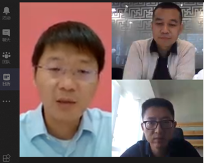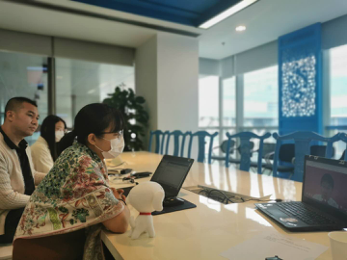QBPC and JD Successfully Hold First Online Meeting This Year
by Andrei Yang
On June 29, QBPC and JD.Com Inc. (“JD”) Brand Protection, Security Investigation and IP departments, exchanged views on IP protections issues QBPC members had encountered on JD platform.

The meeting was hosted by Best Practices/Enforcement Committee Chair Kelvin Liu. JD Brand Protection Department Director Yang Zhi and QBPC Chair Michael Ding welcomed the participants. Michael Ding thanked the participants for joining the discussion and hoped to learn more about what JD had done and what JD would do in the second half of the year to protect IPR. Yang Zhi told attendees that for three years, JD’s brand protection efforts relied on the trust and support of QBPC members. 2020 had brought unique challenges and JD had tailored responses ready to reduce the time taken to respond to complaints, lower the cost for right holders to protect their IPR and achieve a more comprehensive and efficient risk management.
Wu Di from JD’s brand protection department introduced measures JD had taken to combat the pandemic and to protect IPR, emphasizing JD’s zero tolerance towards counterfeits. JD had upgraded their services in the following three aspects to better protect IPR. First, JD continued to improve its ability to discover high risk product. By accumulating information on brands and data provided by right holders, with the hindsight of past experience and big data analysis, JD was able to build risk models for different products, which help making accurate predictions. The second measure is risk prevention. From the moment of a seller’s registration, JD would conduct risk analysis and reject high risk sellers or to keep monitoring them. When a product was launched on JD, JD would also block high risk product and increase the cost for counterfeiting by asking the sellers to put more collaterals or consign the product to JD warehouses. Finally, through technologies such as keyword search and photo identification, JD could quickly deal with risky but low value targets and spend more resource on high value targets.

Questions raised by QBPC members concentrated on four areas. First, what would JD do about the widespread unauthorized uses of brands’ product photos? What were the procedures and what evidence was required? Second, how would JD punish repeat offenders. Third, how had JD carried out the “notice – counternotice” mechanism proscribed in the E-Commerce Law? Finally, members hoped to work more closely with JD offline, utilizing big data to stop infringement completely. JD representatives made corresponding answers.
Near a hundred QBPC members attended the online meeting. Member representatives from ABB, L Brands, Qualcomm, Unilever, Anta, Eaton, Honeywell, Longchamp and Richemont spoke on the meeting.
